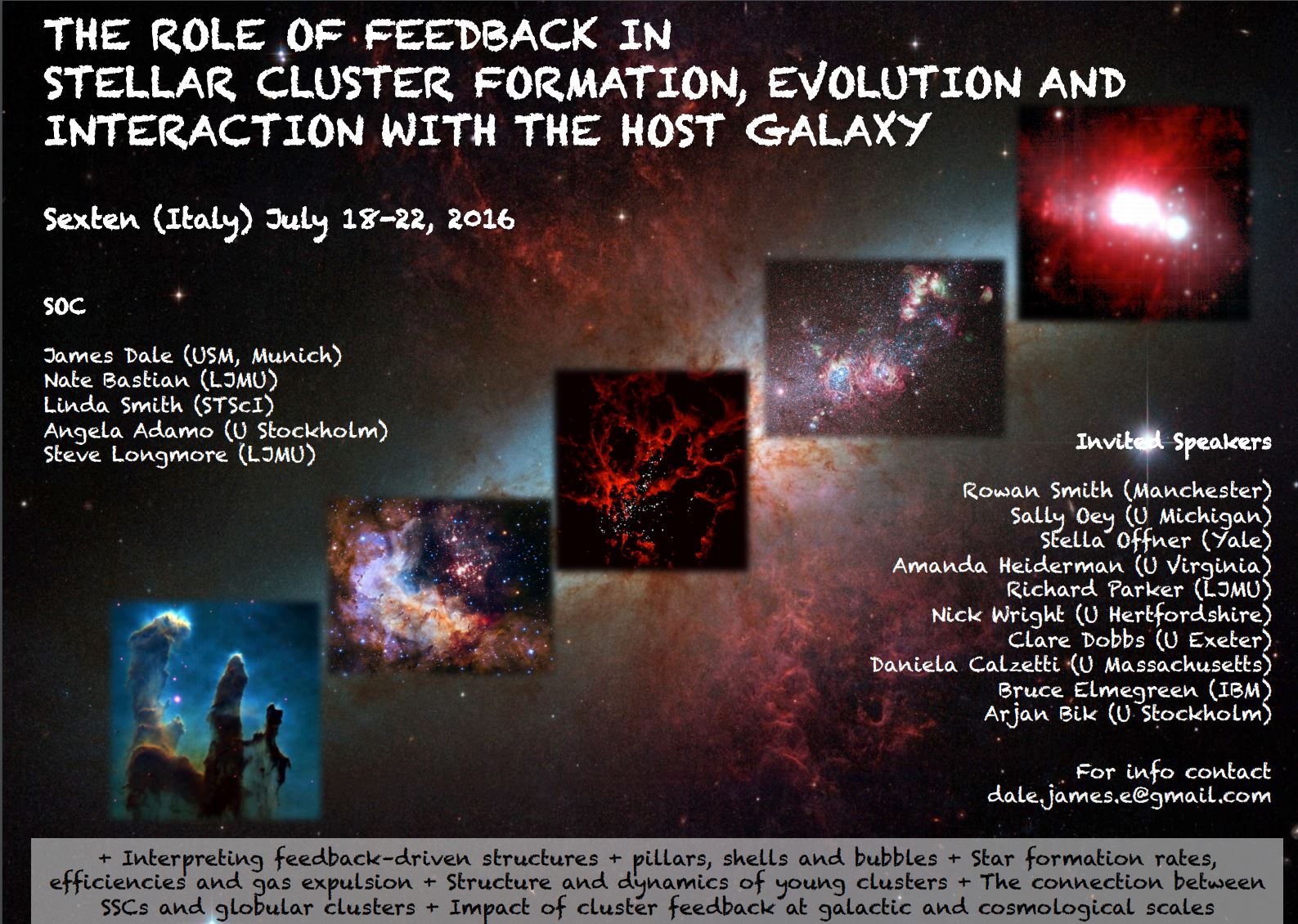
The Role of Feedback in the Formation and Evolution of Star Clusters
LOCATION: Sport & Kurhotel at Bad Moos - Via Val Fiscalina 27, 39030, Sexten
DETAILS
Virtually all star formation at all epochs occurs in GMCs in a hierarchical fashion, producing stellar clusters containing from tens to tens of millions of stars. The fact that all stars are born in clusters profoundly influences the star formation process itself, often forcing stars to compete for a common reservoir of gas, and allowing them to influence each other via feedback processes. The study of star formation is thus almost unavoidably the study of star cluster formation.
There are many different classes of clusters and the connections between young embedded clusters, very massive young super star–clusters (SSCs), ancient globular clusters, associations, open clusters, and field stars are not understood in any detail. It is still unclear how star formation is regulated and terminated, how residual gas is cleared from clusters, and how they become optically visible. Although difficult enough in nearby low–mass systems, these issues have been highlighted even more strongly recently by observations of very massive and dense clusters which are completely devoid of gas and star formation activity at extremely young ages.
Feedback processes play a central role in astrophysics, connecting all scales and all epochs. Jets and radiative accretion feedback control accretion rates onto individual stars and protoplanetary disks, setting stellar masses. Photoionisation and winds from massive stars disrupt accretion flows onto clusters and sweep up dense shells of material, potentially triggering star formation elsewhere. Supernovae are the main drivers of interstellar medium dynamics on galactic scales, and are also responsible for polluting the interstellar and intergalactic medium with metal–enriched gas, profoundly changing the way the Universe behaves as it ages. At the very largest scales, leakage of ionising photons from clusters in the first galaxies is largely responsible for the reionisation of the Universe, one of the most significant and widely studied phases in its history.
Since different feedback mechanisms interact with each other — for example, the environment in which supernovae explode is determined by the earlier action of ionisation and winds — evolution on the largest scales is intimately connected with that at the smallest scales, and much of the most important, interesting and complex physics takes place inside young clusters.
RELATED FILES
No files available yet.
FEE
To be defined
WORKSHOP CODE FOR PAYMENT
ORGANIZERS
Organisers James Dale, Nate Bastian, Angela Adamo, Linda Smith, Steve Longmore

